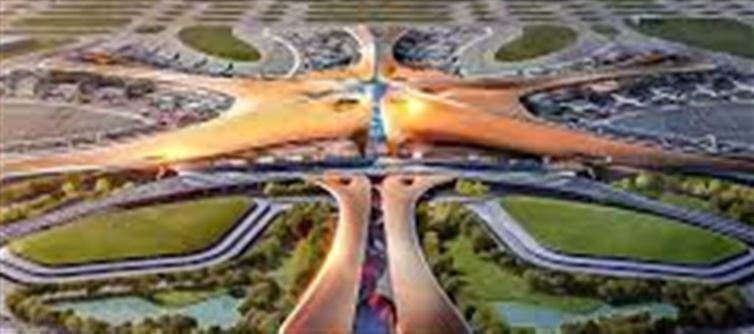
India is on the cusp of a major transformation in its aviation sector. With cities like London, New York, and Moscow boasting multiple airports that cater to diverse needs and growing passenger demands, India’s aviation landscape is undergoing a significant shift. The country’s capital, Delhi NCR, and the Mumbai Metropolitan Region (MMR) are set to join this elite group of cities with Navi mumbai international Airport and Jewar international Airport.
1. A Historic Shift: Multiple Airports in Key Metros
For decades, Delhi and Mumbai have been home to the country's most bustling and overloaded airports: Indira Gandhi international airport (Delhi) and Chhatrapati shivaji Maharaj international airport (Mumbai). With air traffic surging and passenger demands increasing, the indian government has come to the realization that relying on a single airport to serve a large metropolitan region isn’t sustainable.
· Navi mumbai international airport (NMIA): This new greenfield airport is set to be operational soon and will ease congestion at Mumbai's existing airport. Located in Kharghar, Navi mumbai, it is expected to become one of the busiest airports in india and is strategically positioned to handle not just domestic but also international traffic, helping MMR become a global aviation hub.
· Jewar international Airport: Situated in Noida, this airport will serve the Delhi NCR region. It is expected to alleviate pressure on Indira Gandhi international Airport, which is already operating beyond capacity. Jewar is part of a multi-phase development plan aimed at providing state-of-the-art facilities, improving connectivity, and meeting the rapidly growing air travel demands in the region.
2. Breaking Away from the Age-Old Norm
Historically, large cities around the world have been served by a single major airport. In india, however, this trend is rapidly changing. Navi Mumbai and Jewar airports will not just complement the existing airports in Mumbai and Delhi but also serve as independent entities capable of handling high traffic volumes.
This shift marks a move away from the single-airport model, which has been the norm in india for decades. It shows a recognition of the country’s need to build multiple hubs to cater to the growing passenger traffic in key metro areas.
3. What Does This Mean for India’s Aviation Future?
· Enhanced Capacity and Efficiency: The addition of these airports will significantly improve India’s aviation capacity, allowing for more flights, better connections, and improved services. For instance, Mumbai’s existing airport is struggling with congestion, especially with its limited space for expansion. Navi Mumbai’s airport will address this and ease pressure on the existing terminal.
· Global Aviation Hub Status: With a high-quality, multiple-airport infrastructure, both delhi NCR and the mumbai Metropolitan Region are poised to become major global aviation hubs. Cities like London and New York are already examples of how having several airports can improve international connectivity and stimulate economic growth.
· Regional Development: Jewar and Navi Mumbai airports are not just about air travel but are also expected to be economic game-changers. They will spur development in their respective regions by creating jobs, promoting tourism, and boosting the local economy. The airports are likely to attract foreign investments and offer new commercial opportunities for surrounding areas.
4. Solving the Problem of Congestion
Both Mumbai and Delhi airports are operating at or beyond their capacity. Indira Gandhi international Airport, one of the busiest airports in the world, handles over 60 million passengers annually, while Chhatrapati shivaji International deals with more than 50 million. This congestion affects flight schedules, causes delays, and results in lower levels of comfort for passengers.
The introduction of Navi Mumbai and Jewar airports will spread this load and improve the overall passenger experience. These airports are being designed with cutting-edge technologies and modern infrastructure that will ensure quicker check-ins, smoother immigration, and better overall services.
5. A Step Towards Sustainability
India’s aviation industry is also looking towards sustainable growth, and these airports are being built with environmental considerations in mind. The Navi mumbai Airport is designed to have a green footprint with features like solar power usage and water conservation systems. Similarly, Jewar international Airport will incorporate eco-friendly designs, aiming to reduce its carbon footprint and promote sustainable travel.
6. The Road Ahead: How Will This Shape India’s Aviation Landscape?
· Improved Connectivity: More airports in key metro areas mean enhanced domestic and international connections. Travelers will benefit from a wider range of flight options and more competitive airfares.
· Reduced air Traffic Congestion: Multiple airports will ease congestion at busy hubs, reducing flight delays and improving operational efficiency.
· Boost to National Economy: The development of these airports will create thousands of jobs in construction, retail, logistics, and hospitality, providing a much-needed economic boost to the regions they serve.
7. Conclusion: India’s Aviation Future is Bright
The Navi Mumbai and Jewar airports signal a new era for India’s aviation industry. By embracing the idea of multiple airports serving major metro areas, india is ensuring its place among the global aviation powerhouses. As these airports are built and operationalized, they will not only ease congestion but will also propel the country toward greater economic growth, technological advancement, and international connectivity.
India’s air travel industry is certainly on track to compete with the world’s largest and most efficient aviation hubs, making this an exciting time for the country’s travelers and investors alike.
Disclaimer:
The views and opinions expressed in this article are those of the author and do not necessarily reflect the official policy or position of any agency, organization, employer, or company. All information provided is for general informational purposes only. While every effort has been made to ensure accuracy, we make no representations or warranties of any kind, express or implied, about the completeness, reliability, or suitability of the information contained herein. Readers are advised to verify facts and seek professional advice where necessary. Any reliance placed on such information is strictly apt the reader’s own risk..jpg)




 click and follow Indiaherald WhatsApp channel
click and follow Indiaherald WhatsApp channel